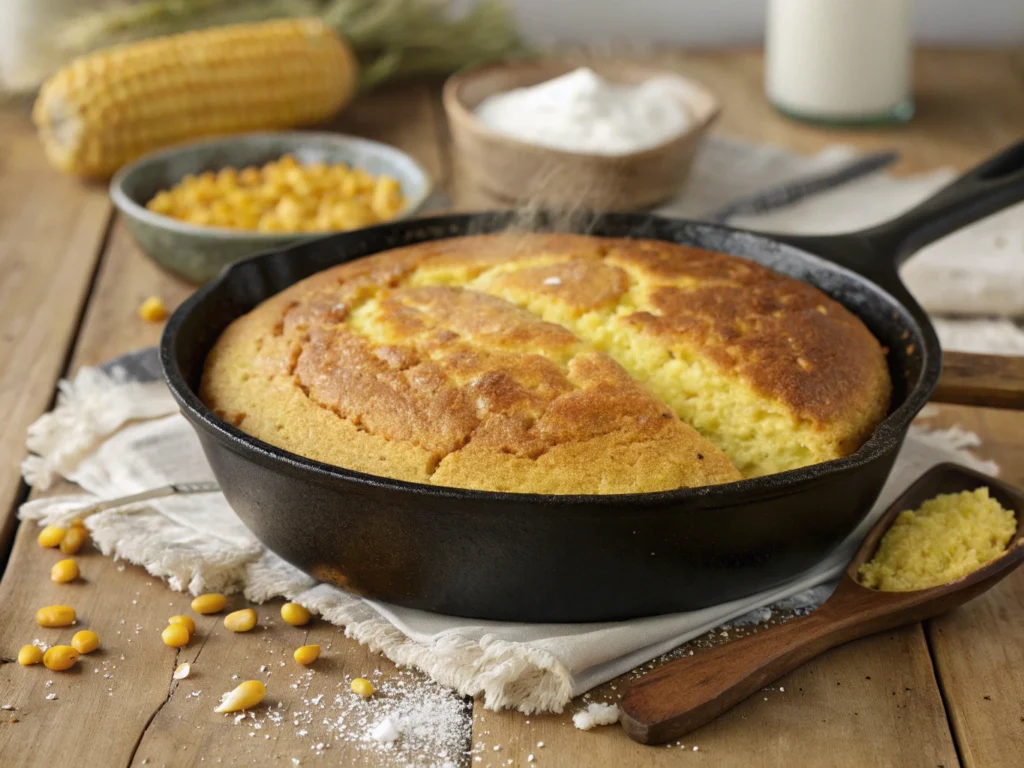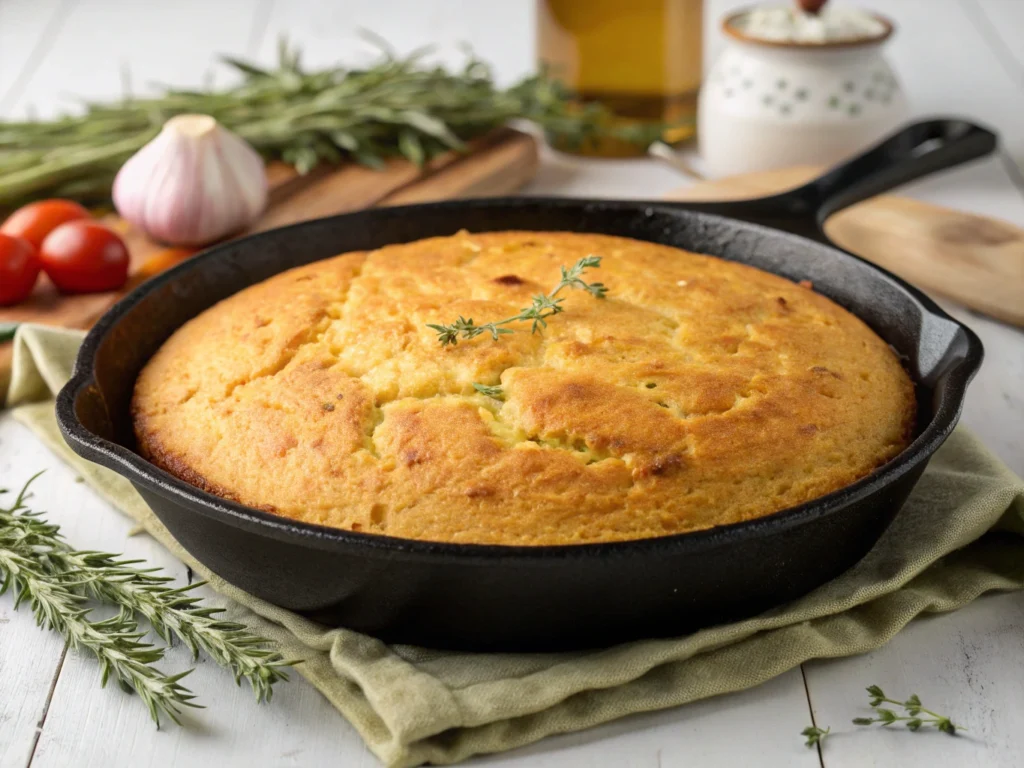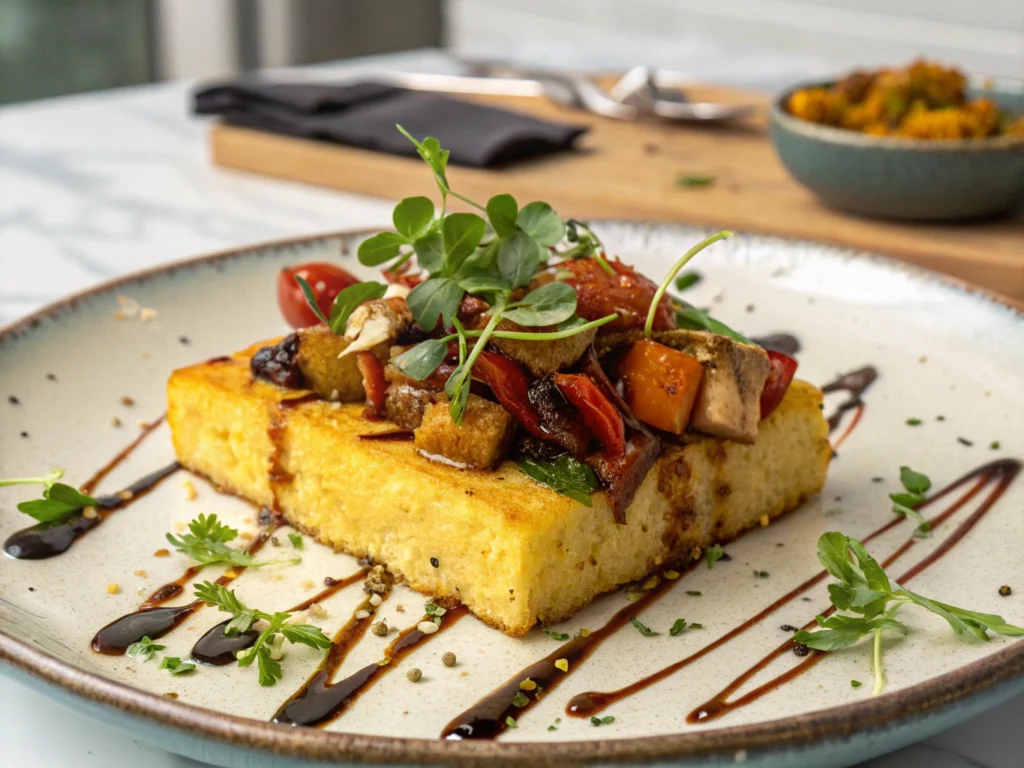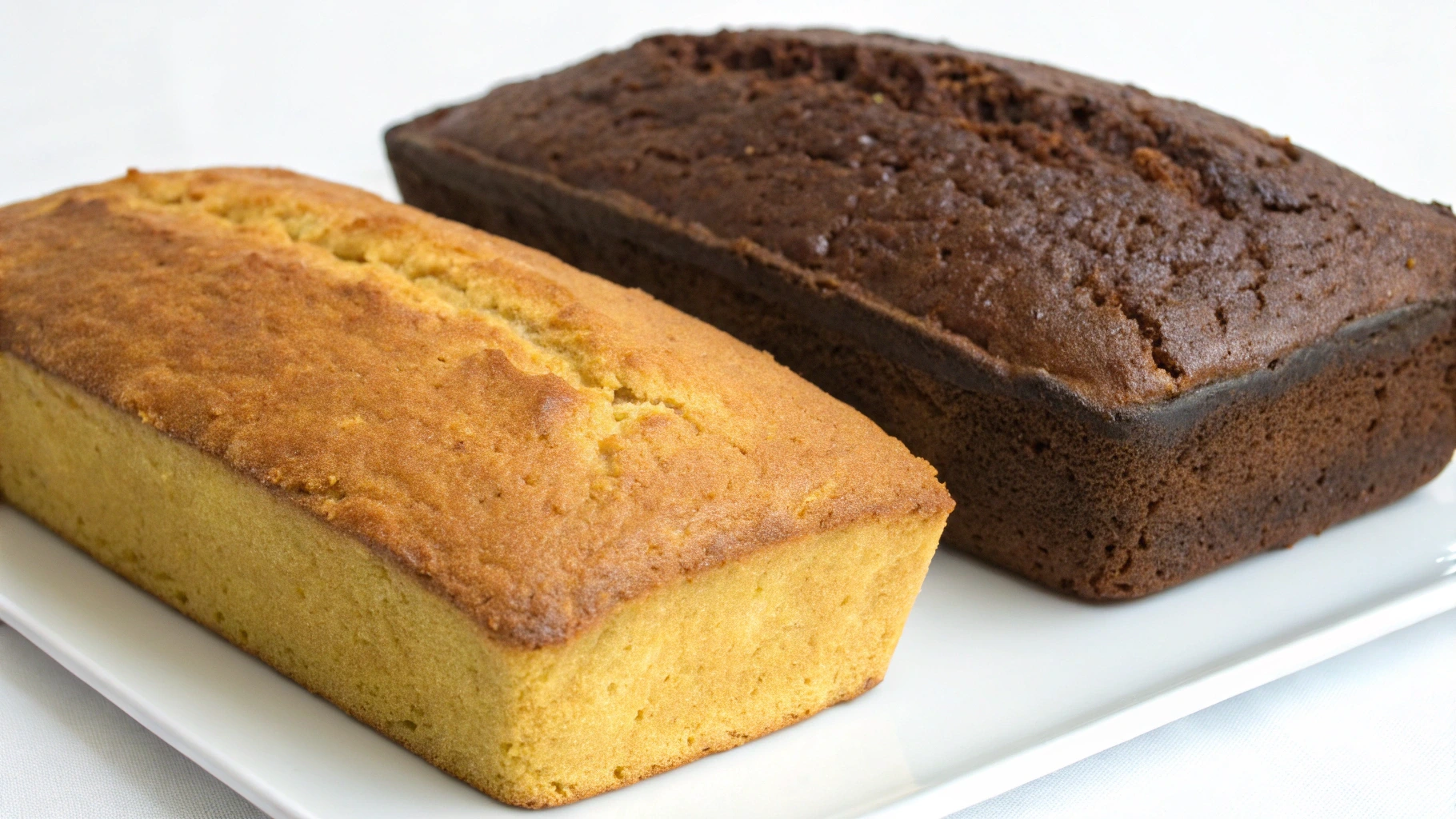Cornbread is a quintessential comfort food that has woven its way into the culinary fabric of the United States. However, the type of cornbread you enjoy often depends on where you’re from. What is the difference between New York cornbread and Southern cornbread? While both variations share the same humble roots, they’re as different as night and day in terms of ingredients, flavor, texture, and preparation.
This article delves into the key aspects that set these two styles apart, exploring their cultural backgrounds, unique ingredient choices, and distinct cooking techniques. Whether you’re a fan of a sweet and cakey bite or crave the savory, crumbly goodness of tradition, there’s something here for everyone. Let’s get into it!
The History of New York and Southern Cornbread
Discuss the origins of cornbread in different regions.
Cornbread’s history dates back centuries, with origins tied to the Indigenous peoples of the Americas. They were the first to grind corn into meal, laying the groundwork for what would become a staple in American kitchens. Over time, settlers adopted and adapted the recipe, turning it into a dish that reflected regional preferences.
The North and South began to develop their own versions of cornbread, influenced by the availability of ingredients and cultural inclinations. Southern cornbread emerged as a no-nonsense, savory dish designed to complement hearty meals, while Northern variations leaned toward a sweeter, more dessert-like approach.
Cultural Significance in Different Regions
In the South, cornbread isn’t just food—it’s an institution. It’s often paired with collard greens, beans, or fried chicken, symbolizing the simplicity and resourcefulness of Southern cooking. On the other hand, Northern cornbread, particularly in areas like New York, takes on a more refined, slightly indulgent character, often enjoyed on its own or as part of a baked dish.
From its Indigenous roots to its modern interpretations, cornbread has become a beloved icon of American cuisine, celebrated in potlucks, barbecues, and holiday feasts alike. Yet, the divide between sweet, cake-like New York cornbread and savory Southern cornbread persists, keeping the debate alive.
Key Ingredients That Define New York and Southern Cornbread
Cornmeal Type and Texture
One of the defining differences between New York cornbread and Southern cornbread is the type of cornmeal used. Southern cornbread typically calls for coarse, stone-ground cornmeal. This creates a crumbly texture that reflects the dish’s rustic origins. In contrast, New York-style cornbread often uses finely ground cornmeal, resulting in a smoother, cake-like texture that appeals to those with a penchant for softer baked goods.
Interestingly, this choice of cornmeal has deep roots in regional cooking traditions. Southerners favor their cornmeal unadulterated, while Northerners often opt for a polished finish to suit sweeter preparations.
How sweeteners differentiate Northern and Southern cornbreads
Perhaps the most heated debate about what is the difference between New York cornbread and Southern cornbread revolves around sweetness. Southern cornbread purists believe that sugar has no place in their recipe. Instead, they rely on the natural flavor of corn, enhanced with savory ingredients like buttermilk and bacon drippings.
On the other hand, New York cornbread embraces sweetness. Sugar, honey, or even molasses are commonly added, transforming the dish into a dessert-like side. This sweeter profile pairs well with dishes like chili or barbecued meats, creating a delightful contrast.
The role of buttermilk and milk in cornbread recipes.
Dairy plays a pivotal role in the texture and flavor of cornbread. Southern recipes frequently use buttermilk, which adds tanginess and helps create a tender crumb. By contrast, Northern recipes often include milk or cream, lending a richer, more velvety consistency to the bread. These differences in dairy use underscore the distinctive approaches to flavor and texture across regions.
What’s the Difference in Cooking Methods?

Skillet baking vs. pan baking for unique textures.
How cornbread is cooked can significantly affect its final texture and flavor. In the South, cast iron skillets reign supreme. They’re preheated with oil or bacon grease, ensuring a golden, crispy crust that contrasts beautifully with the tender interior. This method has been passed down for generations and is cherished for its simplicity and reliability.
In New York, cornbread is more likely baked in standard cake pans or glass dishes. This method yields a softer, uniform crust that complements the bread’s sweeter profile. While the results lack the skillet’s signature crunch, they make up for it in a more refined presentation.
Oil vs. Butter in Preparation
Southern cooks often lean toward using oil or lard to keep their cornbread moist while letting the corn flavor shine. Northern recipes, however, frequently call for butter, which enhances the sweetness and gives the bread a richer flavor.
When comparing these methods, what is the difference between New York cornbread and Southern cornbread becomes even more apparent. The South’s rustic, savory focus stands in stark contrast to the North’s buttery indulgence.
Texture and Flavor Differences in New York and Southern Cornbread
Why New York cornbread is moist and sweet.

One of the most noticeable distinctions in what is the difference between New York cornbread and Southern cornbread is the texture. Southern cornbread leans toward a crumbly, slightly drier texture. This is largely due to its use of coarse cornmeal and minimal added fats. This type of cornbread is perfect for soaking up broths or crumbling into dishes like collard greens or stews.
On the other hand, New York-style cornbread offers a moister bite. The addition of sugar, butter, and milk gives it a softer, almost cake-like consistency. This version is often enjoyed on its own, sometimes topped with honey or a pat of butter.
Southern cornbread: crumbly, savory, and rich.
Flavor is another area where these cornbreads stand apart. Southern cornbread focuses on savory, earthy notes. The use of buttermilk adds a tangy edge, while cooking in a preheated skillet creates a distinct toasty crust.
New York cornbread, with its sweeter profile, appeals to those who enjoy a dessert-like side dish. The sugar balances the corn’s natural sweetness, making it ideal for pairing with spicy or rich main courses. Each bite feels indulgent yet familiar, capturing the comforting essence of traditional baked goods.
For more Southern-inspired comfort food, consider exploring this Southern cornbread recipe.
Gluten-Free Options for New York and Southern Cornbread
Easy substitutions for gluten-free cornbread recipes.
Southern cornbread recipes are steeped in tradition. A classic preparation includes coarse cornmeal, buttermilk, eggs, and a pinch of salt, all cooked in a sizzling hot cast iron skillet. Variations might feature add-ins like jalapeños, cheese, or even cracklins for extra flavor.
Another popular variation is skillet cornbread with bacon drippings, which adds a smoky undertone. This recipe is a staple in many Southern households, often served alongside collard greens or fried chicken.
New York-Inspired Cornbread Variations
Northern cornbread recipes offer more versatility in flavor. A typical recipe includes fine cornmeal, sugar, butter, eggs, and milk. Some variations also incorporate ingredients like vanilla or cinnamon, enhancing its dessert-like appeal.
New York-style cornbread is frequently baked in square or round cake pans, giving it a uniform, polished look. It’s perfect for pairing with barbecue or enjoying with a drizzle of maple syrup for breakfast.
If you’re craving even more comforting recipes, check out this collard greens and dirty rice guide.
Modern Cornbread Trends: Mixing New York and Southern Styles
How fusion recipes are redefining cornbread.

Cornbread has taken on a modern twist in kitchens across the country. Chefs and home cooks alike are blending the characteristics of New York cornbread and Southern cornbread to create unique, hybrid recipes. Sweet and savory elements are combined, such as adding honey to a traditionally savory Southern cornbread or using jalapeños and cheese in a sweet Northern-style recipe.
These fusion recipes appeal to diverse palates and add a creative spin to a classic dish. They also provide an answer to the age-old question: What is the difference between New York cornbread and Southern cornbread? By merging elements of both, cooks can create a balanced dish that highlights the best of each style.
Restaurant and Home Trends
Cornbread’s adaptability has made it a favorite on restaurant menus and in home kitchens. Upscale eateries are reimagining it with gourmet touches like truffle oil or artisan cheeses, while home cooks experiment with healthier versions, using whole grains or gluten-free ingredients. Cornbread’s continued evolution proves that this beloved dish isn’t going anywhere soon.
FAQs
Why is Southern cornbread less sweet?
Southern cornbread’s lack of sweetness is deeply rooted in history and culture. During the 19th century, sugar was a luxury item in the South, reserved for special occasions or desserts. Instead, Southern cooks relied on readily available ingredients like cornmeal, buttermilk, and bacon drippings. These simple components gave Southern cornbread its distinctive savory flavor, which pairs perfectly with traditional dishes like collard greens, black-eyed peas, and chili.
Over time, this savory style became an iconic feature of Southern cuisine. It’s not uncommon for Southerners to debate the “no sugar rule,” viewing sweet cornbread as more Northern or even “inauthentic.” Despite these debates, many modern recipes embrace a slight sweetness, demonstrating the adaptability of this beloved dish.
Can I use New York-style recipes in a cast iron skillet?
Yes, you absolutely can! While New York-style cornbread is traditionally baked in cake pans, it transitions beautifully to a cast iron skillet. Preheating the skillet in the oven with butter or oil before adding the batter creates a golden crust similar to Southern cornbread. This adaptation combines the rich, moist texture of New York cornbread with the crispy edges beloved in the South.
If you’re wondering what is the difference between New York cornbread and Southern cornbread in terms of preparation, the type of pan is a major factor. The cast iron skillet not only imparts a unique texture but also enhances the flavor with a slightly smoky, toasted undertone.
What are gluten-free options for each style?
Cornbread is a versatile dish that easily accommodates gluten-free diets. For Southern cornbread, replacing wheat flour with almond or coconut flour works well while keeping the rustic, crumbly texture intact. Many recipes also rely heavily on cornmeal, which is naturally gluten-free—just ensure the brand you use isn’t cross-contaminated.
For New York-style cornbread, gluten-free all-purpose flour is an excellent substitute. Combining it with finely ground cornmeal preserves the smooth, cake-like consistency. Gluten-free variations often include a bit more fat, like butter or oil, to prevent the bread from drying out.
To add even more flavor, experiment with mix-ins like shredded cheese, diced jalapeños, or even cranberries. Whether you’re cooking a savory Southern version or a sweet New York-style loaf, gluten-free adaptations allow everyone to enjoy this comforting classic.
Conclusion: Celebrating the Diversity of Cornbread
Cornbread’s rich history and regional variations highlight the beauty of American culinary traditions. By exploring what is the difference between New York cornbread and Southern cornbread, we gain a deeper appreciation for how geography, culture, and ingredients shape the foods we love.
Southern cornbread, with its crumbly texture and savory flavor, stands as a testament to the resourcefulness of cooks who crafted recipes from what they had on hand. Meanwhile, New York-style cornbread offers a sweeter, moister alternative, perfect for those who enjoy a more indulgent twist on this humble staple.
Both styles serve as reminders that cornbread is more than just a side dish—it’s a connection to history, a source of comfort, and a canvas for creativity. Whether you prefer the savory crunch of a skillet-baked Southern loaf or the tender sweetness of a Northern-inspired recipe, there’s a version of cornbread to suit every taste.
As you experiment with recipes, don’t be afraid to combine elements from both traditions. Sweeten your Southern cornbread with honey, or give your New York-style bread a savory kick with jalapeños. The possibilities are endless, and every variation brings its own charm.
For more baking inspiration and creative recipe ideas, visit DeliciouRecipes and explore the fusion of flavors that make cornbread such a beloved dish. Whether you stick to tradition or venture into new territory, cornbread will always hold a special place on the table.

